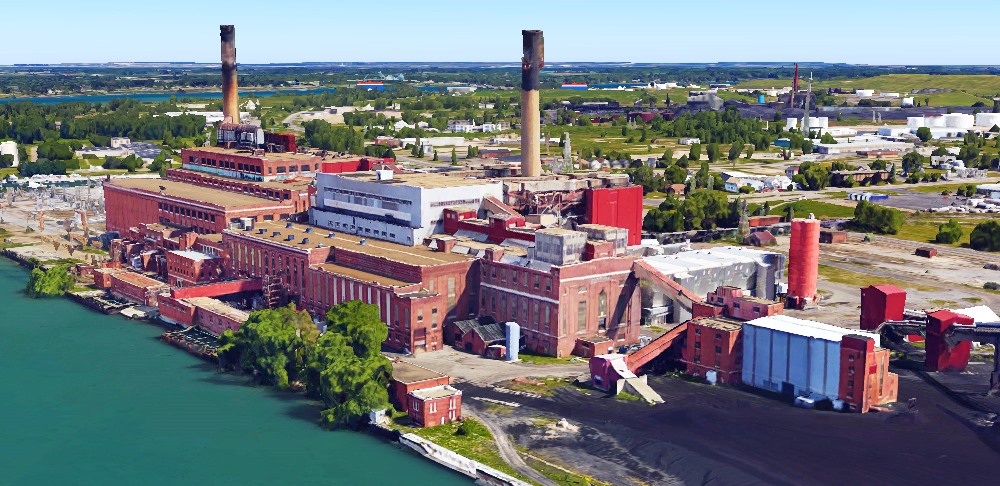There are 53 industrial facilities in Tonawanda, New York–a working class Buffalo suburb 13 miles downstream of America’s most storied waterfalls–the highest concentration of air regulated facilities in the state.
Sixteen months ago, the coal-fired Huntley Generating Station, which sits on the banks of the Niagara River, stopped producing power for first time since World War I.
As a result, Tonawanda, lost one of its biggest polluters–and its largest taxpayer–in one fell swoop. The impact of Huntley’s decade-long slowdown — and final shutdown — hit this upstate New York community like a punch to the economic gut.
Now, the Clean Air Coalition of Western New York, with area labor unions and other community groups, founder Rebecca Newberry helped to hatch a plan for Tonawanda’s next chapter — and provide an inclusive, equitable template for other blue-collar towns facing the loss of dirty energy jobs and other polluting industries.
A preliminary to-do list at the site includes moving an 11-acre pile of unused Powder River Basin coal to a 116-acre NRG landfill about a mile away; closing a coal-ash lagoon; and continuing to clean 11 petroleum bulk storage tanks. But according to a state environmental assessment, contamination levels there do not “represent a significant threat to human health or the environment.”
“I don’t have a crystal ball, so I don’t know how long this takes,” NRG spokesman David Gaier says, adding that the company is just beginning the long-term decommissioning process for Huntley. “But you don’t go from a working power plant to condos in a year.”
Emminger, the town supervisor, isn’t envisioning condominiums — or any other type of housing — at the waterfront site. “Residential is too risky there,” he says, adding that light industry is more likely.
“We have a proud industrial past,” Emminger notes. “Hopefully, it’s going to be part of our future.”
After the release of the 2014 report by the Institute for Energy Economics and Financial Analysis (IEEFA) regarding the dim future of the Huntley Coal Plant, Clean Air held a series of community assemblies in the city and town of Tonawanda, Grand Island, and Riverside to vision a “just” transition in case of the plant’s closure.
They are working to ensure that, after retirement of the power plant, residents who live near the plant are protected and that new jobs are found for former plant workers. They also want to help ensure that new revenue is secured for the schools and local governments, for a clean up of the waterfront property.
The Clean Air Coalition builds power by developing grassroots leaders who organize their communities to run and win environmental justice and public health campaigns in Western New York. Clean Air’s first campaign in the community was to lead a resident driven campaign against Tonawanda Coke, a coke manufacturing company that was identified as a bad actor through sound data.
Clean Air’s campaign resulted in an EPA enforcement action and criminal trial. Tonawanda Coke was found guilty in March 2013 of breaking 14 federal laws under the Clean Air Act and the Resource Conservation and Recovery Act. Mark Kamholz, the environmental control manager, was found guilty on the same counts and an additional count of obstruction of justice.
Since the EPA’s enforcement action, there was a reported 86% reduction in benzene from the continuous air monitor at Grand Island Blvd. and a 68% reduction at the air monitor on Brookside Terrace (see more at DEC Tonawanda Air Study) The company was fined $12.5 million in fines, 5 years of probation, and to pay nearly 12 million for future health and environmental studies. Mark Kamholz was sentenced to 1 year and 1 day in prison for plus a $20,000 fine and a supervised release after serving the term.
Photo of Huntley Generating Station via Google Earth.

